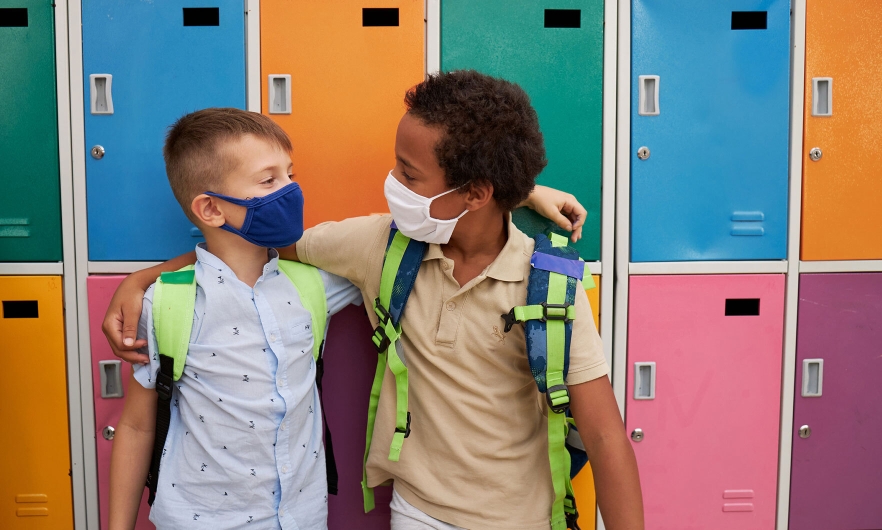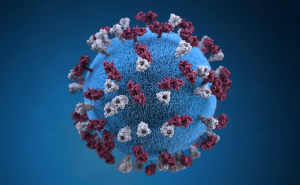Even More Safety and Effectiveness Data for COVID-19 Vaccines for Children

The FDA authorized the Pfizer vaccine for children ages 5–11 in October 2021, on the basis of studies showing a robust immune response, fewer cases of COVID, and minimal side effects in several thousand children. Since that time, millions of children have been vaccinated.
The latter—minimal side effects—speaks to the vaccine’s safety, while the former—robust immune response and fewer cases of COVID—speaks to its efficacy. Both are critical metrics for determining how any treatment or medical intervention is working, and it’s important for the measurement of both to continue long after initial clinical trials.
Two important studies have recently been published with updated data on the effectiveness and safety of COVID-19 vaccination in children. The bottom line: The benefits of these vaccines are more than previously appreciated, and the safety record is strong.
Study 1: Effectiveness in Preventing Multisystem Inflammatory Syndrome in Children
A CDC study published on January 14, 2022, examined the Pfizer vaccine’s effectiveness in preventing a serious complication from COVID-19 infection: multisystem inflammatory syndrome in children (MIS-C) ages 12–18 years. So far, there have been 6,431 documented cases of MIS-C in the U.S. and 55 reported deaths, according to the CDC.
MIS-C is a rare and dangerous complication of even mild cases of COVID-19. It is thought to be caused by an immune reaction to the SARS-CoV-2 virus. Symptoms can run the gamut from rash, conjunctivitis, and high fever to abdominal pain, vomiting, and diarrhea, said Lasya Gaur, M.D., a pediatric cardiologist at Johns Hopkins Medicine. Since MIS-C typically occurs two to six weeks after infection, these symptoms can be confusing: “Some children are hospitalized with illnesses that look similar to acute appendicitis that turns out to be MIS-C,” Gaur said in an episode of Public Health On Call.
What the Researchers Found:
-
Pfizer’s vaccine was highly effective at preventing MIS-C: Two doses of the vaccine led to a 91% reduction in the likelihood of MIS-C.
-
95% of adolescents who were hospitalized with MIS-C and 100% of critically ill patients requiring life support were unvaccinated.
- 39% of unvaccinated MIS-C patients required life support. No fully vaccinated adolescents with MIS-C required life support.
Study 2: COVID-19 Vaccine Safety in Children 5–11 Years
At the end of 2021, the CDC released a report examining vaccine side effects from the first wave of younger children ages 5–11 years to get vaccinated. The vaccinations occurred between November 3 and December 19, 2021.
For the 8.1 million children who were vaccinated during this time frame, 4,149 (.05%) VAERS events were reported (see below for more on VAERS).
Additionally, researchers looked at data from 42,504 children who were enrolled in v-safe (see below for more on v-safe).
VAERS: The Vaccine Adverse Event Reporting System
The Vaccine Adverse Event Reporting System is the U.S.’s national vaccine safety monitoring system. The system collects vast amounts of data around vaccinations from health care providers, vaccine manufacturers, and members of the general public. Anyone can submit reports, so the system picks up many types of events that are unrelated to the vaccination itself. Confusion over VAERS reports, where people assume events are linked to vaccination, is the basis of much misinformation on the internet.
For this study, researchers looked at 5,277 total VAERS reports submitted from November 3 - December 19, but only 4,249 were considered as the others were incomplete or the date of vaccination was unknown.
v-safe: A smartphone-based tool that uses text messaging and web surveys to provide personal health check-ins after receiving the COVID-19 vaccine.
v-safe is a voluntary smartphone-based safety surveillance system in which the general public can enroll and answer basic health questions after vaccination. In this study, researchers looked at data collected from parents and guardians who enrolled their children. They were sent text-message reminders for online health surveys that asked questions about vaccine reactions like swelling or redness at the injection site, fever, and other side effects, as well as the severity of those side effects (e.g., did the child miss school). For this study, researchers reviewed data from 42,504 enrolled children.
What They Found:
-
4,149 (97.6%) of VAERS reports were not for serious events. The most commonly reported were related to vaccine administration, such as children receiving an adult dose by accident. While children are supposed to get a smaller dose, no adverse event was associated with an incorrect dose.
-
The most frequently reported side effects were swelling or redness at the injection site and fever, headache, and/or fatigue, but most were mild and did not interfere with normal daily activities.
- Of the 4,249 VAERS reports, 100 were what are classified as serious events. Of those 100 reports, the most common were fever and vomiting that interfered with daily activities.
- There were two deaths reported. Both occurred in children with multiple chronic conditions. A review by medical experts identified no data suggesting the deaths were caused by vaccination.
- Out of 8 million vaccine doses, there have been only 11 verified VAERs reports of myocarditis among children ages 5–11. It’s important to note that people who are infected with COVID-19 have 16 times the risk of myocarditis compared to those who are vaccinated. Moreover, in instances of myocarditis from COVID-19 after vaccination, the cases were much less severe than those after infection.
- From v-safe, more mild reactions like swelling or redness at the injection site and fever, headache, and/or fatigue were reported after the second dose, but only 7.4% reported that these side effects impacted normal daily activities.
- Of parents of 42,504 children, 1% sought medical care in the week after vaccination. Only five children had information regarding hospitalization, but all for unrelated conditions: two cases of appendicitis, one case of vomiting and dehydration, one case of respiratory infection, and one case of a bacterial infection like strep.
What We Learned From These Reports
These new studies offer strong support for vaccinating children against COVID-19. The research indicates that vaccination protects against severe complications, with a strong record on safety.
RELATED:
- Johns Hopkins Launches Free Virtual Course to Train “Ambassadors” to Talk to Parents About COVID Vaccines for Children
- 10 Reasons Your Child Should Get Vaccinated for COVID-19 As Soon As Possible
- Back to School: Vaccinating Kids and Teens
Gigi Gronvall, PhD, is a senior scholar at the Center for Health Security and an associate professor in Environmental Health and Engineering at the Johns Hopkins Bloomberg School of Public Health.
Lindsay Smith Rogers, MA, is the producer of the Public Health On Call podcast and the associate director of content strategy for the Johns Hopkins Bloomberg School of Public Health.
Joshua Sharfstein, MD, is the vice dean for Public Health Practice and Community Engagement and a professor in Health Policy and Management at the Johns Hopkins Bloomberg School of Public Health. He is also the director of the Bloomberg American Health Initiative and a host of the Public Health On Call podcast.





